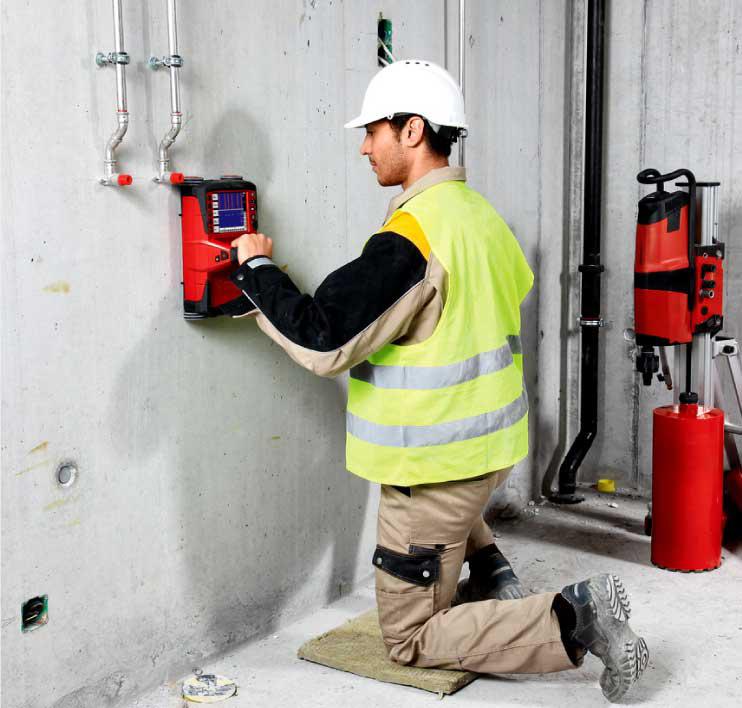Checking Out the Midst: A Comprehensive Overview to Concrete Scanning and Its Diverse Applications
In the world of building and infrastructure development, the precise process of concrete scanning holds a crucial function in making sure the architectural stability and security of tasks. As innovation proceeds to develop, the applications of concrete scanning have actually broadened far past simple surface-level evaluations.
Relevance of Concrete Scanning
Understanding the importance of concrete scanning is essential in ensuring the safety and security and stability of frameworks throughout construction and improvement tasks. Concrete scanning makes use of sophisticated innovations such as ground-penetrating radar (GPR) and electro-magnetic induction to find embedded items, spaces, or other anomalies within concrete frameworks - RainierGPR Concrete Scanning. By carrying out comprehensive scans before exploration, cutting, or coring right into concrete, construction groups can prevent accidental damage to vital structural elements like rebar, conduits, or post-tension wires. This aggressive method not just prevents pricey repairs and project hold-ups but additionally improves general building and construction security by reducing the danger of architectural failings or collapses because of compromised stability.
Moreover, concrete scanning plays a pivotal duty in making sure conformity with building regulations and policies that mandate the security of existing structural elements during building and construction tasks. By accurately mapping out the inner composition of concrete, scanning innovations allow building and construction professionals to make informed choices that maintain the architectural stability and sturdiness of structures and infrastructure projects. Basically, the value of concrete scanning depends on its capability to safeguard both the structural stability and the workers included in building undertakings.
Technologies Used in Concrete Scanning
Concrete scanning counts on advanced innovations such as ground-penetrating radar (GPR) and electro-magnetic induction to accurately spot embedded things and abnormalities within concrete frameworks. Ground-penetrating radar operates by releasing high-frequency electro-magnetic waves right into the concrete.
Electromagnetic induction, on the other hand, works by generating magnetic fields around a concrete structure through a transmitter coil. When steel things are present within the concrete, they disrupt these electromagnetic areas, triggering eddy currents to stream through the metal. By measuring the changes in the electro-magnetic areas with a receiver coil, the system can identify the area of metallic objects in the concrete.
These innovative modern technologies play a critical function in non-destructive screening, guaranteeing the security and stability of concrete frameworks in numerous industries.
Applications in Construction Industry
Within the building sector, concrete scanning innovation locates diverse applications that boost task efficiency and safety. Additionally, concrete scanning is utilized for situating gaps, such as air pockets or areas of damage within concrete, which can endanger the total stamina of a structure. Concrete scanning plays a critical role in high quality control by confirming the thickness of concrete covers over reinforcement, guaranteeing compliance with design specs and standards.

Safety And Security Benefits of Concrete Scanning
In the realm of look at here now construction security, the application of concrete scanning innovation provides a vital benefit in preemptively determining possible dangers and fortifying structural honesty. By utilizing sophisticated scanning techniques such as ground-penetrating radar (GPR) and electromagnetic induction, construction teams can accurately situate rebar, post-tension cables, channels, and other concealed things within concrete structures. This proactive method substantially decreases the risk of unintended strikes during exploration, reducing, or coring tasks, consequently preventing costly damages, injuries, and task delays.
Moreover, concrete scanning boosts employee safety and security by offering real-time information concerning the structural condition of concrete components. By resolving potential security worries immediately, concrete scanning contributes to creating a protected working setting and alleviating the likelihood of structural failings or accidents on building and construction sites.
Future Fads in Concrete Scanning
Emerging innovations in scanning technology are positioned to revolutionize the field of concrete examination and analysis. One major fad that is gaining grip is the combination of synthetic intelligence (AI) and artificial intelligence algorithms right into concrete scanning gadgets. By harnessing the power of AI, these systems can assess vast amounts of data accumulated throughout scanning procedures to offer even more precise and thorough insights right into the problem of concrete structures. This can assist in identifying covert defects, anticipating potential structural failings, and even suggesting upkeep strategies.
Another considerable fad is the growth of even more portable and straightforward scanning devices. Miniaturization of scanning tools enables less complicated accessibility to restricted rooms and remote places, making inspections a lot more efficient and thorough. Additionally, improvements in cordless communication technologies enable real-time information transfer and evaluation, facilitating quicker decision-making processes.
Furthermore, there is a growing concentrate on sustainability in concrete scanning innovations - RainierGPR Concrete Scanning. Makers are increasingly integrating green materials and energy-efficient functions right into their tools to reduce ecological influence. These future fads are set to improve the effectiveness, accuracy, and sustainability of concrete scanning practices, shaping the industry's future landscape
Conclusion
Finally, concrete scanning plays a crucial function in the construction sector by making sure the security and performance of different tasks. By using innovative modern technologies, such as GPR Get More Information and radar imaging, experts have the ability to precisely discover potential hazards within concrete look these up frameworks. The applications of concrete scanning are large and remain to evolve, making it a crucial tool for preserving the integrity of buildings and framework. As innovation developments, the future of concrete scanning holds encouraging advancements for boosting building and construction processes.
